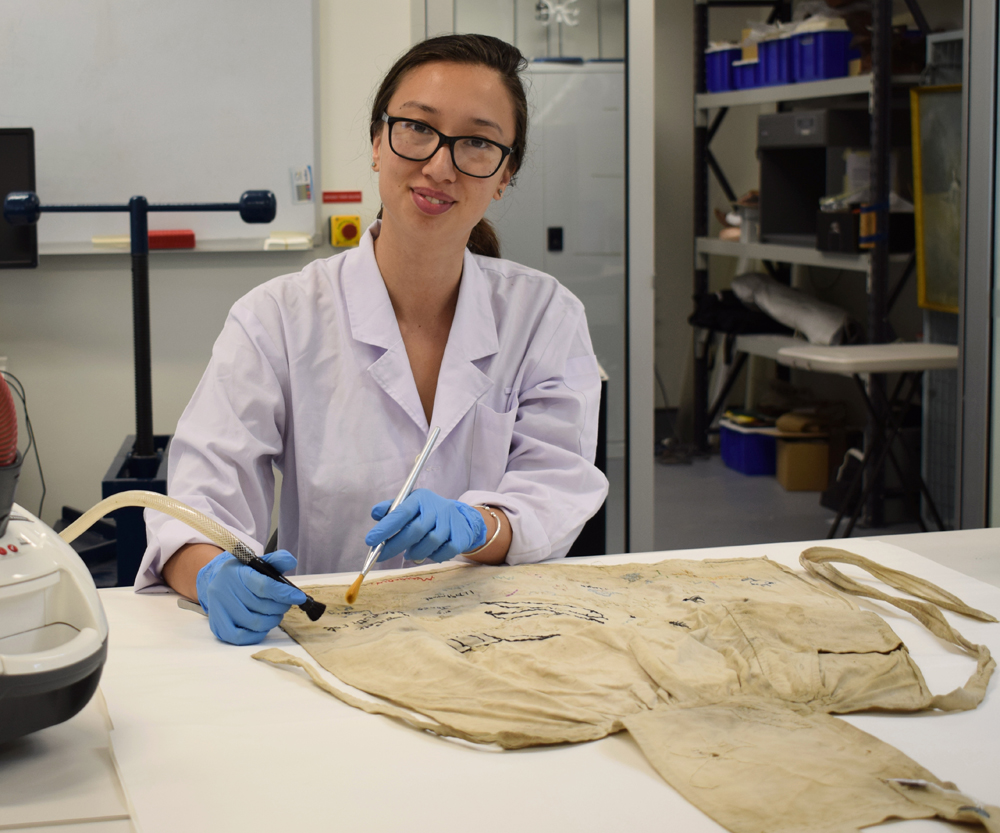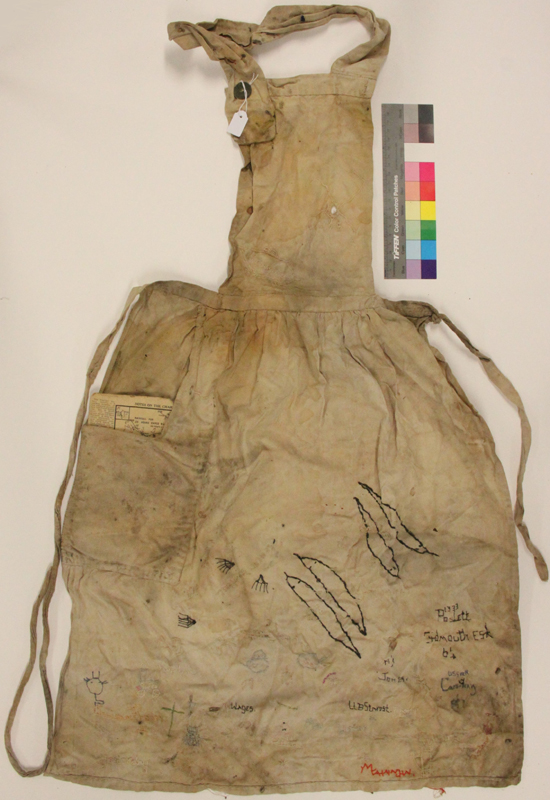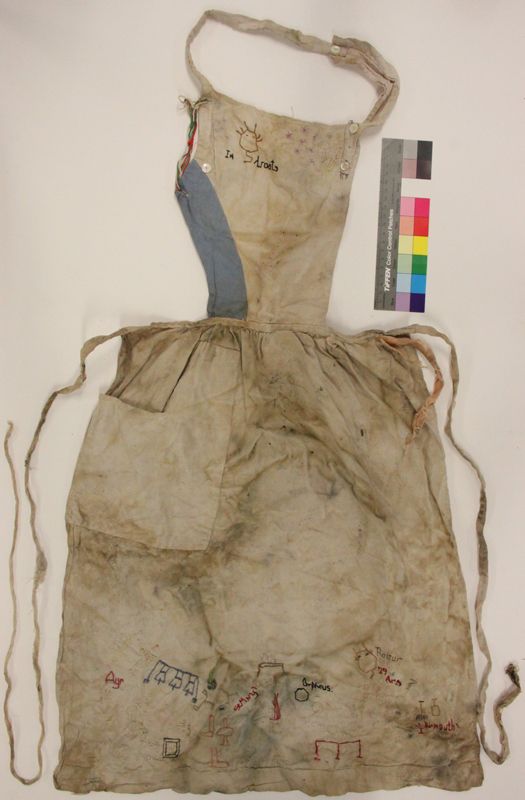Amanda Jones and Marcus Butler
21 May 2018: Embroidered aprons and packages wrapped in newspaper are among the delicate items uncovered at Australia’s oldest continuously operating psychiatric institution and examined by a University of Canberra Honours student.
The odd assortment of items offers an intriguing glimpse into the world of those confined to the Ladies Cottage, part of the former Royal Derwent Hospital at New Norfolk, in the late 19th and early 20th century.
How the items made their way from Tasmania to Canberra to be studied is just as fascinating.
Dr Tracy Ireland, Associate Professor of Cultural Heritage at the University of Canberra, was following the work of colleagues from Flinders University on an archaeological dig at the site. A photo of the aprons posted on Twitter sparked her interest.
Dr Ireland and Bachelor of Arts and Design (Honours) student Danica Auld, who she is supervising, were given permission by the owners of the collection to bring some of the items to the University to be studied.
Ms Auld said preserving the items was a slow and deliberate process. She researched the meanings of symbols and shapes that were embroidered on the aprons and searched newspapers and other documents from the time.
“Close study of the aprons and of the social context of the time suggested that the Royal Derwent Hospital was not a closed institution but had links to the outside world,” she said.
“The embroidery on the aprons show a range of influences, from global affairs, religious texts and everyday items. Patients were able to maintain connections with the wider world through newspapers, letters and excursions.”
Ms Auld hopes her work will help draw attention to the site and its significance, while challenging perceptions of the hospital being an isolating institution.
“If we can better understand the complexity of life in the hospital through this collection, it could help change the ingrained perceptions people have of the institution,” she said.
Ms Auld completed a Bachelor of Heritage, Museums and Conversation at the University in 2016 and graduated with First Class honours in a Bachelor of Arts and Design (Honours) in April.
“I had an interest in chemistry and history and conservation was a way to marry those interests into a career,” she said.
“UC had an undergraduate course that let me gain practical experience and I took those opportunities to try and gain knowledge on a variety of materials.”
Ms Auld said taking part in the many internships offered was the highlight of her studies.
“I was able to work with huge, interesting collections and apply the knowledge from my studies in the workplace. I worked on a diverse range of objects from sporting heroes’ uniforms to samurai armour.”
Ms Auld returned the collection to Tasmania in February where she shared her findings with the local community.
She will soon be packing her bags to travel even further abroad after being accepted to study a Master of Philosophy in Textile Conservation at the University of Glasgow, starting in September.
“It’s a specialty that appeals to me as I’ve always loved fashion and making clothes, so the course offers the chance to learn from experienced professionals with a particular skill set,” she said.
Dr Ireland said she was thrilled to see Ms Auld take her learning to the international arena.
“Our graduates have excellent employment outcomes and we are incredibly proud of Danica’s achievements,” Dr Ireland said.
“Internships form such an important part of a student’s learning and working on projects such as this helps them develop valuable skills and on the job learning.”





